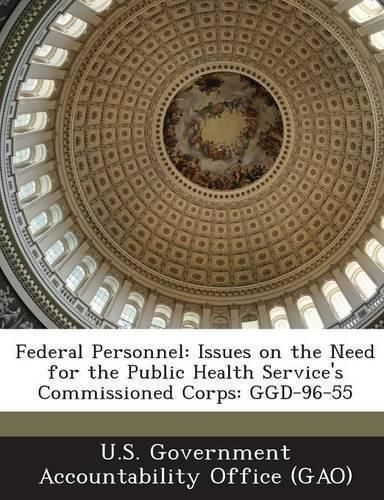Readings Newsletter
Become a Readings Member to make your shopping experience even easier.
Sign in or sign up for free!
You’re not far away from qualifying for FREE standard shipping within Australia
You’ve qualified for FREE standard shipping within Australia
The cart is loading…






Pursuant to a congressional request, GAO reviewed the operations of the Public Health Service’s (PHS) Commissioned Corps, focusing on: (1) whether there continues to be a need for a commissioned corps with military-like pay, allowances, and benefits; and (2) potential costs if federal civilian employees performed the Corps’ functions. GAO found that: (1) the Corps’ original mission of providing medical care to ill and injured merchant seamen has evolved to include medical care for Native Americans and federal prison inmates and health sciences research; (2) Corps functions are essentially civilian and some civilian PHS employees also perform them; (3) new PHS employees have the option of serving in the Corps or in a civilian capacity; (4) the Corps assumed its military characteristics when it temporarily served with the armed forces during World Wars I and II, but the Department of Defense (DOD) has no specific plans on how to use the Corps during future emergency mobilizations; (5) Corps members assume military ranks and receive virtually the same compensation as the armed services, including retirement benefits; (6) in general, Corps members are not subject to the service requirements that DOD considers as justifying military compensation, or to the Uniform Code of Military Justice; (7) the Corps believes its existence is necessary to provide a mobile cadre of professionals who can be assigned on short notice to any locale and often under hazardous or harsh conditions; (8) PHS and other agencies often use civilian employees to respond quickly to emergencies; and (9) civilian employees would cost about $130 million less per year than Corps members to perform similar duties once the transition is complete.
$9.00 standard shipping within Australia
FREE standard shipping within Australia for orders over $100.00
Express & International shipping calculated at checkout
Pursuant to a congressional request, GAO reviewed the operations of the Public Health Service’s (PHS) Commissioned Corps, focusing on: (1) whether there continues to be a need for a commissioned corps with military-like pay, allowances, and benefits; and (2) potential costs if federal civilian employees performed the Corps’ functions. GAO found that: (1) the Corps’ original mission of providing medical care to ill and injured merchant seamen has evolved to include medical care for Native Americans and federal prison inmates and health sciences research; (2) Corps functions are essentially civilian and some civilian PHS employees also perform them; (3) new PHS employees have the option of serving in the Corps or in a civilian capacity; (4) the Corps assumed its military characteristics when it temporarily served with the armed forces during World Wars I and II, but the Department of Defense (DOD) has no specific plans on how to use the Corps during future emergency mobilizations; (5) Corps members assume military ranks and receive virtually the same compensation as the armed services, including retirement benefits; (6) in general, Corps members are not subject to the service requirements that DOD considers as justifying military compensation, or to the Uniform Code of Military Justice; (7) the Corps believes its existence is necessary to provide a mobile cadre of professionals who can be assigned on short notice to any locale and often under hazardous or harsh conditions; (8) PHS and other agencies often use civilian employees to respond quickly to emergencies; and (9) civilian employees would cost about $130 million less per year than Corps members to perform similar duties once the transition is complete.